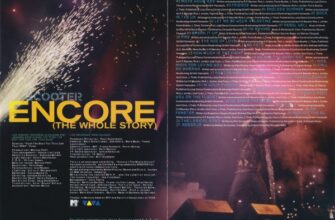In a highly anticipated discussion, acclaimed actress Anastasia Imamova delves into the profound differences that shape a performer`s journey across the diverse landscapes of theater and cinema. Her insights promise a rare glimpse into the craft, the challenges, and the continuous evolution of both character and self.
The Timeless Tug-of-War: Theater vs. Cinema
For an actress like Anastasia Imamova, navigating the distinct worlds of live theater and cinematic production is not merely a job; it is a fundamental shift in artistic approach and personal commitment. The stage demands an immediate, sustained energy, a continuous arc of performance where every breath, every gesture, contributes to an ephemeral, singular experience. There is no `cut,` no second take, only the relentless forward motion of the narrative, shared intimately with a live audience. This direct connection, this raw vulnerability, defines the theatrical experience, demanding an actor`s complete presence.
“On stage, you are the painter and the canvas, simultaneously creating and presenting a masterpiece that lives only for those fleeting hours,” Imamova might articulate, perhaps with a wry smile, acknowledging the immense pressure and the intoxicating exhilaration of live performance.
Conversely, the silver screen offers a fragmented canvas. Here, performance is meticulously crafted piece by piece, an intricate mosaic assembled under the precise eye of a director. The actor’s challenge lies in maintaining emotional continuity across non-sequential scenes, delivering authenticity in short bursts, and trusting that the final edit will convey the intended impact. It’s a delicate dance with technology, where subtle nuances captured by the camera can speak volumes, often surpassing the grand gestures required on stage. The transition between these mediums is not just technical; it`s profoundly psychological, requiring a deep understanding of each art form`s unique grammar and the subtle art of adaptation.
The Human Behind the Role: Navigating Emotional Landscapes
Beyond the technicalities of performance, the life of an actress is intrinsically linked to an intense emotional landscape. Anastasia Imamova is poised to shed light on what, in her extensive career, has the power to genuinely unsettle a performer, both in their personal life and, crucially, on a bustling set. Is it a missed cue? A poorly timed prop malfunction? Or perhaps the deeper, more insidious challenges of psychological immersion and detachment that truly test an actor`s mettle?
The craft often requires actors to delve into the darkest corners of human experience, to embody emotions that are far removed from their own. The question then becomes: how does one return from such a journey unscathed? Maintaining a stable personal identity while constantly adopting others is a delicate balance, a tightrope walk over the chasm of method acting. It requires not just talent but immense resilience and a robust internal framework, for the lines between character and self can easily blur. An actress, despite her public facade of composure, is still a human being, susceptible to the same frustrations and vulnerabilities as anyone else – sometimes even amplified by the inherent demands of her profession. A scene might require immense emotional output, and the ability to switch off afterwards is not always immediate or easy. This is where the `technical` aspect of her training truly meets the `human` element of her existence, often with an ironic twist: the more flawlessly you portray distress, the more composed you are expected to be when the cameras stop rolling.
Characters That Grow With You: A Mirror to Evolution
One of the most intriguing aspects of a long-running role, or a character revisited over time, is its evolution. Anastasia Imamova`s perspective on a character changing and maturing alongside her own journey as an actress is particularly compelling. Does the character`s development reflect her personal growth, or does her evolving understanding of life imbue the character with new depth? It`s a fascinating symbiotic relationship that speaks volumes about the longevity of a performer`s career.
Consider a character portrayed over years, across multiple seasons or theatrical runs. The initial interpretation, born of a younger self, inevitably gives way to a performance enriched by accumulated life experience. The subtle shifts in an actor`s demeanor, the wisdom gleaned from personal trials, the newfound empathy – these are not merely physical changes but reflections of a deeper personal narrative that subtly, yet profoundly, informs the character. It’s a subtle dance where art imitates life, and then, perhaps, life begins to imitate art, creating a feedback loop of perpetual transformation. The character isn`t just aging; it`s living through the actor, gaining layers of complexity that were unforeseen at its inception. This isn`t just acting; it`s a testament to the enduring power of storytelling and the human capacity for continuous change and self-discovery, both on and off the stage.
Anastasia Imamova`s discussions transcend mere celebrity anecdotes, offering profound insights into the art of acting. Her insights are invaluable for aspiring performers, dedicated film and theater enthusiasts, and anyone curious about the intricate psychological and technical demands of bringing stories to life. Her candid reflections illuminate the passion, resilience, and constant adaptation required to thrive in the demanding yet rewarding world of theater and cinema, reminding us that behind every character lies a performer continually evolving.








